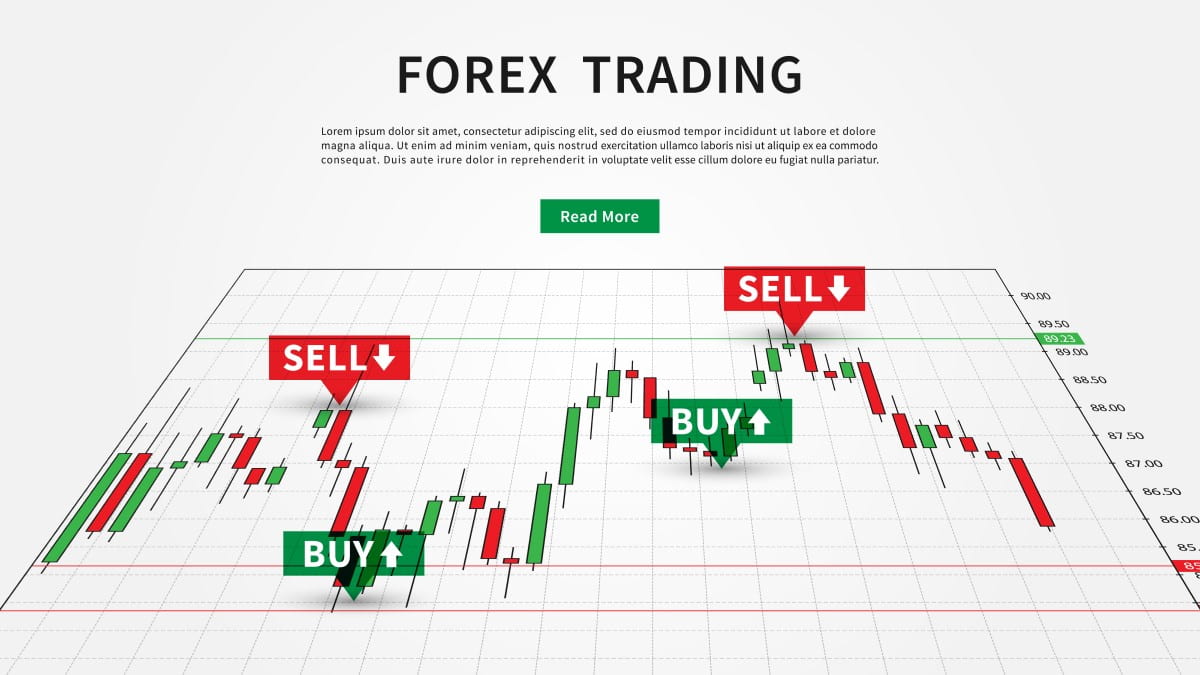

Forex and CFD Swap Rates
This article clears up the difference and goes into a little more detail on how swap rates apply to CFD and forex trading.
Swaps as Trading Products
What is a swap and how does it work?
A swap is a derivative instrument that allows two parties to exchange the cash flows, liabilities or price movements of two assets.
A simple example would involve two parties exchanging the cash flows of two interest rate products such as bonds. One may pay a fixed rate while the other pays a variable rate. If the holder of the fixed-rate instrument believes prices may rise, they would be happy to receive the variable-rate cash flows.
If the variable-rate instrument holder wants more certainty about the rate they'll receive, they'd be happy to exchange their variable cash flows for fixed ones.
Swaps allow institutions like pension funds, insurance companies and banks to manage liabilities and risk. They also allow hedge funds and traders to speculate on interest rates, currencies and other variables in the economy. They're generally traded on an OTC (over-the-counter) basis and aren't listed on exchanges.
This means the terms of each swap agreement are settled by the two parties for each trade.

Types of swaps
- Interest Rate Swaps are used to exchange interest payments that are either paid or received. Usually, one rate will be fixed, while the other is variable. They allow issuers of floating-rate debt instruments to fix their liabilities and also allow funds to speculate on interest rate changes.
- Currency Swaps allow two parties to exchange the principal and interest payments of debt instruments. This allows parties to manage risk or speculate on interest rates and currency changes. Central banks use them to stabilise currencies. Corporations use them to manage their foreign exchange exposure.
- Commodity Swaps are used to exchange the commodity spot price for a fixed price for a specified period. They allow producers and manufacturers that use commodities to manage their revenue and costs.
- Total Return Swaps are very similar to CFDs but are used by institutions rather than retail traders. They allow two parties to exchange the change in prices and the dividend and interest payments of an asset or pool of assets for a fixed rate.
- Credit Default Swaps are like insurance policies that protect the holder of a bond in the event of default by the borrower. In the event of default, the seller pays the buyer the principal and interest payments they have lost.
Swaps and Rollovers in the CFD and Forex Markets
CFD and forex trading involves various currencies and interest rates. Interest is always paid or received daily, so every time you hold a CFD or forex position overnight, you must either receive or pay interest.
This means any overnight position involves a type of interest rate or currency swap.
Swaps are implemented when positions are rolled over from one day to the next. This usually occurs at 5 pm but can vary from broker to broker. All open positions are rolled over, and swap transactions are executed at the specified time.

CFD Swap
When you trade a CFD on a stock, index, cryptocurrency or commodity, you're trading on margin and effectively borrowing capital from the seller of the CFD. There's usually no interest cost if you close the position of the CFD on the day you bought it. However, if you hold it overnight, you'll have to pay interest on the position. This is the Swap Buy Rate and is debited from your trading account.
If you hold a short position overnight using a CFD on a stock, index, cryptocurrency or commodity, you're, in effect, lending capital to your broker. When your broker sells the underlying asset, they receive cash which earns interest until the position is closed. However, you must also pay a fee to borrow the underlying asset.
The interest you earn is netted against the asset borrowing fee and may result in a positive or negative rate depending on the interest rate. The net rate is the Swap Sell Rate.
In most cases, the interest rate will be calculated based on the base currency of your trading account. However, in more complex transactions, the interest may be charged based on the country where the underlying asset is traded or held. This may seem complicated, but
brokers list the Swap Buy and Swap Sell Rates on their websites or trading platform. These vary from one instrument to the next as the applicable interest rates and asset lending rates vary.
You can view the swap rates for Libertex here.
Example:
Apple CFDs have a swap buy rate of -0.0302% and a swap sell rate of -0.0254%. That means that for every day you hold a long position, you'll be debited 0.0302% of the position's value at the time of purchase.
Let's say you buy CFDs on 10 Apple shares at $201.50 each.
The nominal value of that position is $2,015. So, for each day you hold the position, your account will be debited $2,015 x 0.0302% = $0.61.
If you open a short CFD position on 10 Apple shares at the same price, your account will be debited for $2,015 x 0.0254% = $0.51.

Forex Swap
Forex swaps work in much the same way. When you buy a forex pair, you own the first currency, and you're short of the second currency. That means you earn interest on the first and pay interest on the second currency.
Because most countries have very low interest rates, the net interest rate will still be negative in most cases. However, you may earn a net positive rate when you buy currencies with higher rates.
Example One
The EUR/USD forex pair has a swap buy rate of -0.0038 % and a
swap sell rate of -0.0018%.
If you buy the EUR/USD pair, you hold Euros, and you owe US Dollars. That means you earn interest on the EUR position and pay interest on the USD position.
If you sell the EUR/USD pair, you are short Euros and long USD. That means you pay less on the position because USD rates are higher than EUR rates.
Example Two
The USD/MXN pair has a swap buy rate of-0.0184 % and a swap sell rate of 0.0123%.
In the case of the USD and MXN, there's a significant interest rate differential between the two currencies. That means that if you hold Pesos, you'll earn the difference between the two interest rates.
To hold Pesos, you would have to sell the USD/MXN pair and pay USD rates while earning MXN rates.
Swap Trading Strategies
Strategy №1: Carry Trade
Buy a high-yielding currency and sell a low-yielding currency when the higher-yielding currency is in an uptrend. Hold for as long as the uptrend persists.
Example:
Sell EUR/MXN, which yields 0.0131% per day. Hold as long as the swap rate remains positive and the MXN doesn't lose value.
Pros:
- A very effective strategy when rates are generally high and emerging market currencies are in demand.
- The yield will increase if the interest rate of the lower-yielding currency falls.
Cons:
- Profits can be wiped out quickly if the price of the higher-yielding currency falls.
- It takes a long time to generate a decent return.
Strategy №2: Triple Swap Credit
Daily swap interest is debited or credited daily. However, to make up for the weekend, a triple debit or credit is applied on one day every week. Some brokers do this on Friday, and some brokers do it on Wednesday. This means holding a carry trade overnight on that day can result in a triple credit.
Example:
Sell EUR/MXN, which yields 0.0131% per day on Wednesday and close the position on Thursday morning. This will result in a credit of 0.0393%.
Pros:
- An effective way to earn a small profit on an overnight trade. Work best when executed in conjunction with another trading strategy.
Cons:
- The profit can be wiped out quickly if the currency pair moves against you.
No swap accounts
A no swap account, or swap-free account, is an account that doesn't get debited or credited when positions are rolled over each day. These accounts were originally developed for Islamic traders. However, some brokers now make them available to everyone.
The loss of revenue is usually made via other types of fees.
Pros:
- You get to focus entirely on the price action without worrying about interest rates.
- You won't pay interest when you're short of high-yielding currencies.
Cons
- You can't earn interest when you buy higher-yielding currencies.
- You may end up paying more hidden fees than you would with a regular account.
Conclusion
From time to time, changes in the global interest rate environment create the possibility to earn interest from forex swaps. Short-selling other assets can also generate interest credits in the right environment.
If you would like to learn more about CFD trading, Libertex is an award- winning platform to start with. Libertex is trading platform that offers forex, stocks, commodities, indices, ETFs and cryptocurrencies on CFDs and real stocks with leverage of up to 30 times for retail clients. The platform provides free trading tutorials and state-of-the-art trading tools.
You can open a free demo account with Libertex and begin learning about the market immediately with no risk.
Disclaimer: The information in this article is not intended to be and does not constitute investment advice or any other form of advice or recommendation of any sort offered or endorsed by Libertex. Past performance does not guarantee future results.
Why trade with Libertex?
- Get access to a free demo account free of charge.
- Enjoy technical support from an operator 5 days a week, from 9 a.m. to 9 p.m. (Central European Standard Time).
- Use a multiplier of up to 1:30 (for retail clients).
- Operate on a platform for any device: Libertex and MetaTrader.